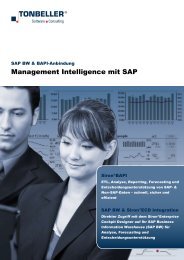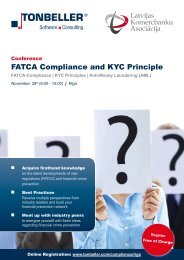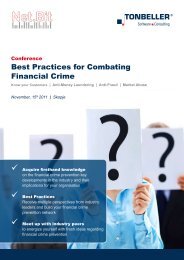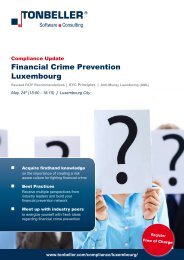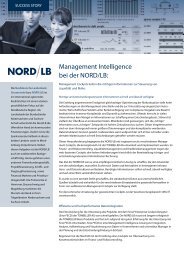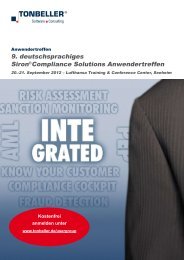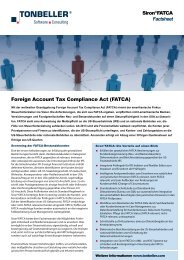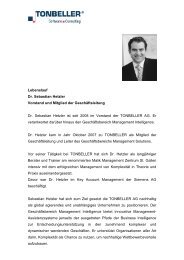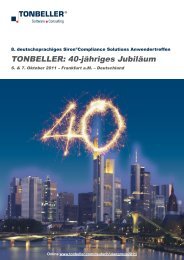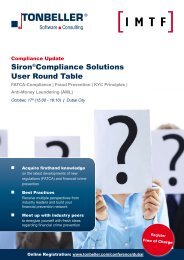Keep Money Laundering and Fraud out - TONBELLER® AG
Keep Money Laundering and Fraud out - TONBELLER® AG
Keep Money Laundering and Fraud out - TONBELLER® AG
You also want an ePaper? Increase the reach of your titles
YUMPU automatically turns print PDFs into web optimized ePapers that Google loves.
1.1 Know Your Customer Policies<br />
Whitepaper | <strong>Keep</strong> <strong>Money</strong> <strong>Laundering</strong> <strong>and</strong> <strong>Fraud</strong> <strong>out</strong> -<br />
Know your Customer (KYC)<br />
“Know your customer” regulations are valid in most countries since many years. The primary best<br />
practice on “know your customer”, “customer identification” <strong>and</strong> “customer due diligence” can be found<br />
in several international publications such as the 2003 FATF Recommendations on AML/CTF, the<br />
“customer due diligence” guidance notes from the Basel Committee on Banking Supervision <strong>and</strong> the<br />
3 rd EU Directive. This directive for example calls for several requirements that need to be fulfilled by<br />
the financial institutes:<br />
� Risk-based approach (see: 2.1 Step 1: Risk Assessment) to customer due diligence<br />
(3 rd EU Directive provides specification for Customer Due Diligence <strong>and</strong> Enhanced Customer<br />
Due Diligence)<br />
� Identification & verification of high-risk customers such as Politically Exposed Persons (see:<br />
2.2.1.3 PEP screening & watch list management)<br />
� Definition <strong>and</strong> control of beneficial ownership (see: 2.2.1.4 Beneficial owner)<br />
� Establishment of a risk profile (see: 2.2 Step 2: Know your Customer <strong>and</strong> following chapters)<br />
for each customer (legal entity or natural person) during customer acceptance <strong>and</strong> check for<br />
consistency during the ongoing customer due diligence process (see: 2.3 Step 3: Ongoing<br />
Customer Due Diligence)<br />
1.2 Regulations<br />
Those regulations <strong>and</strong> guidelines must be or already have been translated into national law. The<br />
status of implementing these regulations differs by region <strong>and</strong> country. A list of the regional regulations<br />
can be found in the following chapters.<br />
1.2.1 Europe<br />
Austria http://www.imf.org/external/pubs/ft/scr/2004/cr04238.pdf<br />
Belgium http://www.imf.org/external/pubs/ft/scr/2006/cr0672.pdf<br />
Czech<br />
Republic<br />
www.imf.org/external/pubs/ft/scr/2004/cr0446.pdf <strong>and</strong><br />
http://www.coe.int/t/dghl/monitoring/moneyval/Evaluations/round3/MONEYVAL(2006)21Rep-<br />
CZE3_en.pdf<br />
Denmark http://www.fatf-gafi.org/dataoecd/1/26/37588381.pdf<br />
Finl<strong>and</strong> http://www.fatf-gafi.org/dataoecd/20/46/39794392.pdf<br />
1-5



